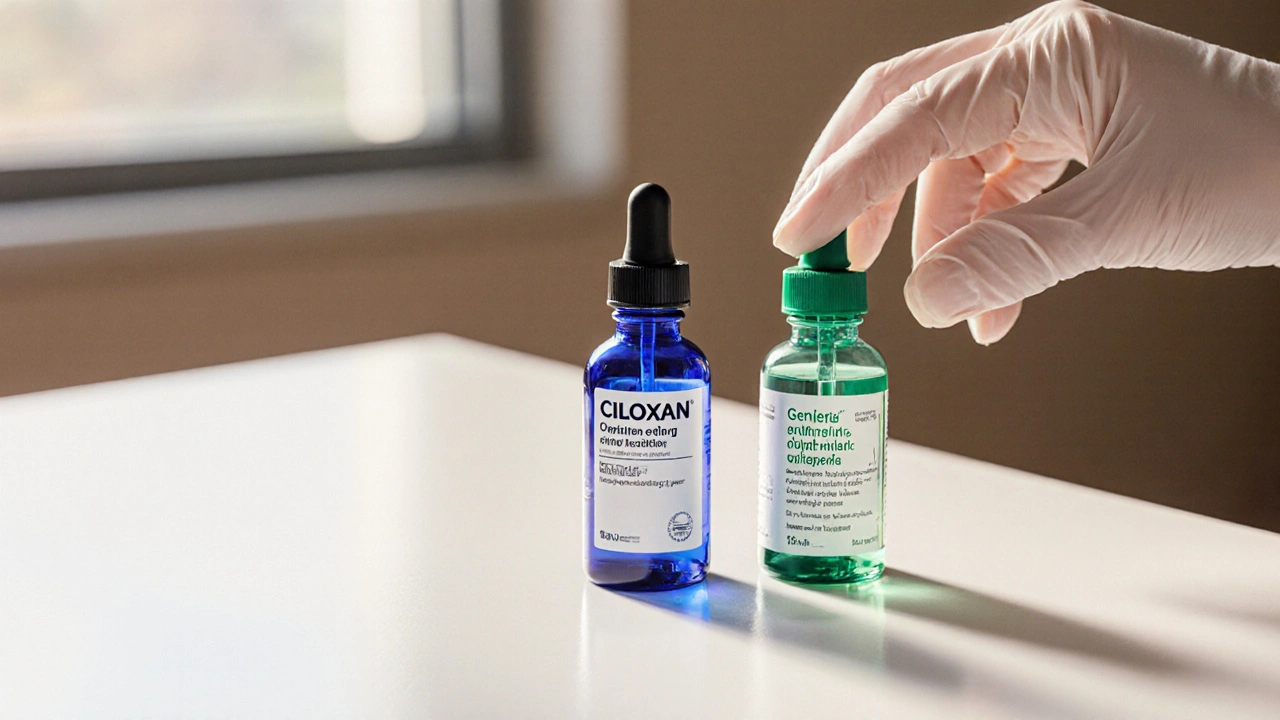
Ciloxan Ophthalmic Solution vs Top Eye‑Drop Alternatives: A Practical Comparison
A detailed side‑by‑side review of Ciloxan eye drops versus top ophthalmic antibiotics, covering efficacy, dosing, cost, side effects and when to choose each option.
When dealing with ophthalmic antibiotics, medicines formulated specifically for the eye to kill or stop the growth of bacteria. Also known as eye antibiotics, they are essential for treating infections that can threaten vision.
One key related entity is bacterial eye infections, conditions like conjunctivitis, keratitis, or blepharitis caused by harmful bacteria. Another important concept is topical eye drops, liquid forms applied directly to the ocular surface for fast drug delivery. Finally, antibiotic resistance, the ability of bacteria to survive despite drug exposure, influences how we choose and use eye antibiotics. All these pieces fit together to shape how clinicians manage ocular infections safely and effectively.
Ophthalmic antibiotics target bacterial cell walls, protein synthesis, or DNA replication. For instance, fluoroquinolones disrupt DNA gyrase, while macrolides bind ribosomes to halt protein production. This action stops bacterial growth, allowing the immune system to clear the infection faster. The drug’s concentration in the tear film stays high because drops or ointments stay on the eye surface longer than oral pills, ensuring a potent, localized effect.
Because they stay where they’re needed, these medicines reduce systemic side effects. However, the eye’s protective barriers can limit absorption, so formulation matters. Preservative‑free options are preferred for patients with dry eye or allergies, while oily ointments provide a longer contact time for overnight treatment.
Choosing the right antibiotic depends on the likely bacterial culprit. Staphylococcus aureus, Streptococcus pneumoniae, and Haemophilus influenzae are common in conjunctivitis. Culture results guide therapy, but empirical choices often start with a broad‑spectrum agent until lab data arrive.
Resistance patterns differ by region. In areas where methicillin‑resistant Staphylococcus (MRSA) is prevalent, a fluoroquinolone may be preferred over a macrolide. Monitoring local antibiograms helps clinicians avoid using drugs that bacteria already ignore.
Patient compliance plays a huge role. Drops must be applied multiple times a day, and missing doses can let bacteria rebound. Educating patients on proper technique—pulling the lower lid down, avoiding contact with the bottle tip, and shaking suspensions—boosts success rates.
Beyond treating infections, ophthalmic antibiotics are sometimes used prophylactically after eye surgery to prevent post‑operative endophthalmitis. In those cases, timing is critical: a dose before the incision and another shortly after helps keep the ocular environment sterile.
Overall, ophthalmic antibiotics bridge the gap between powerful systemic drugs and gentle eye care. By delivering high concentrations directly where infection lives, they protect vision while keeping side effects low.
Below you’ll find a curated list of articles covering everything from buying safe generic medications online to detailed comparisons of specific eye‑related drugs. Whether you’re looking for price‑saving tips, dosage guides, or the latest research on resistance, the posts ahead give practical, up‑to‑date information you can act on right away.

A detailed side‑by‑side review of Ciloxan eye drops versus top ophthalmic antibiotics, covering efficacy, dosing, cost, side effects and when to choose each option.